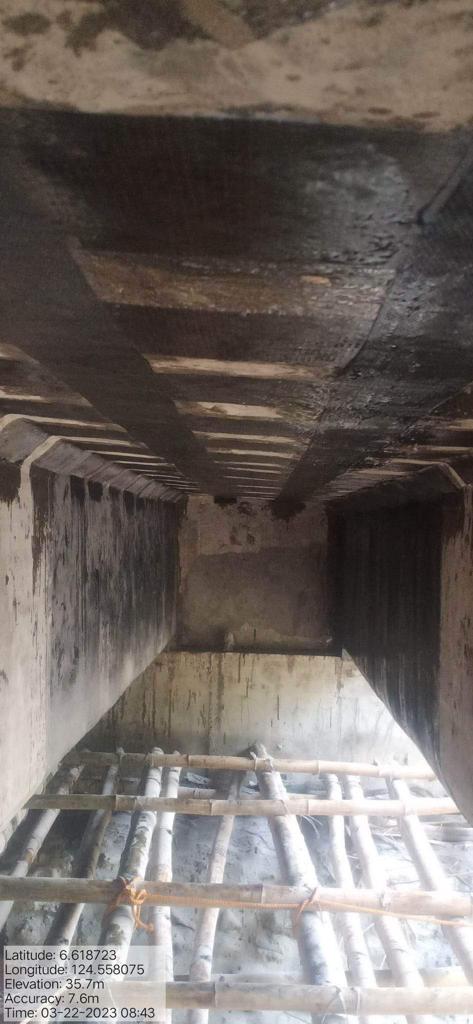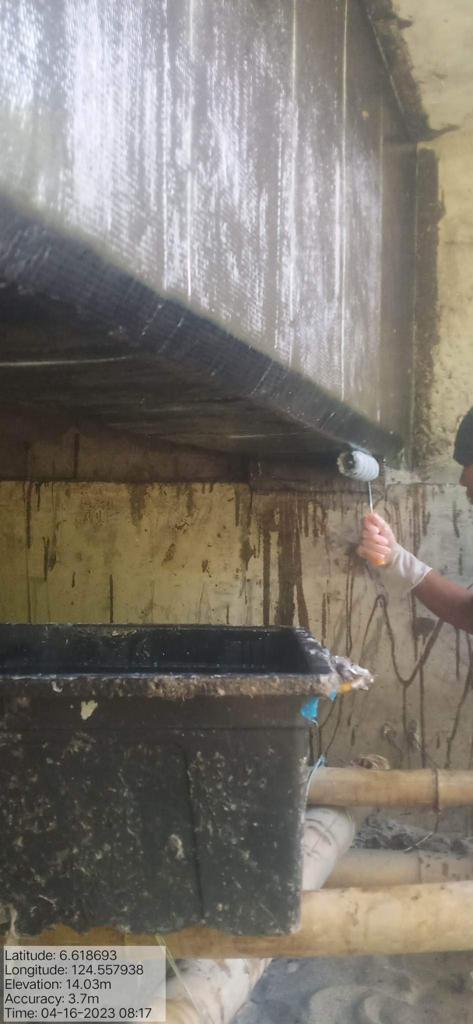About us | Email: info@wolf-fix.com

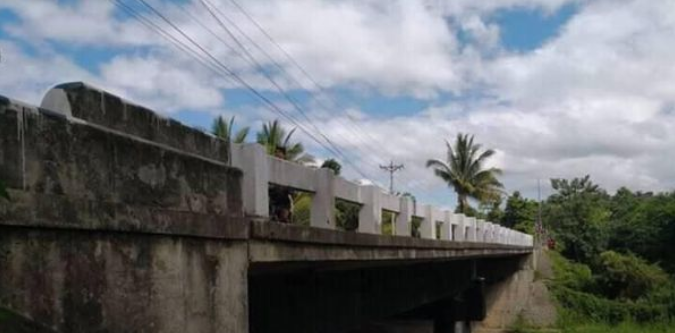
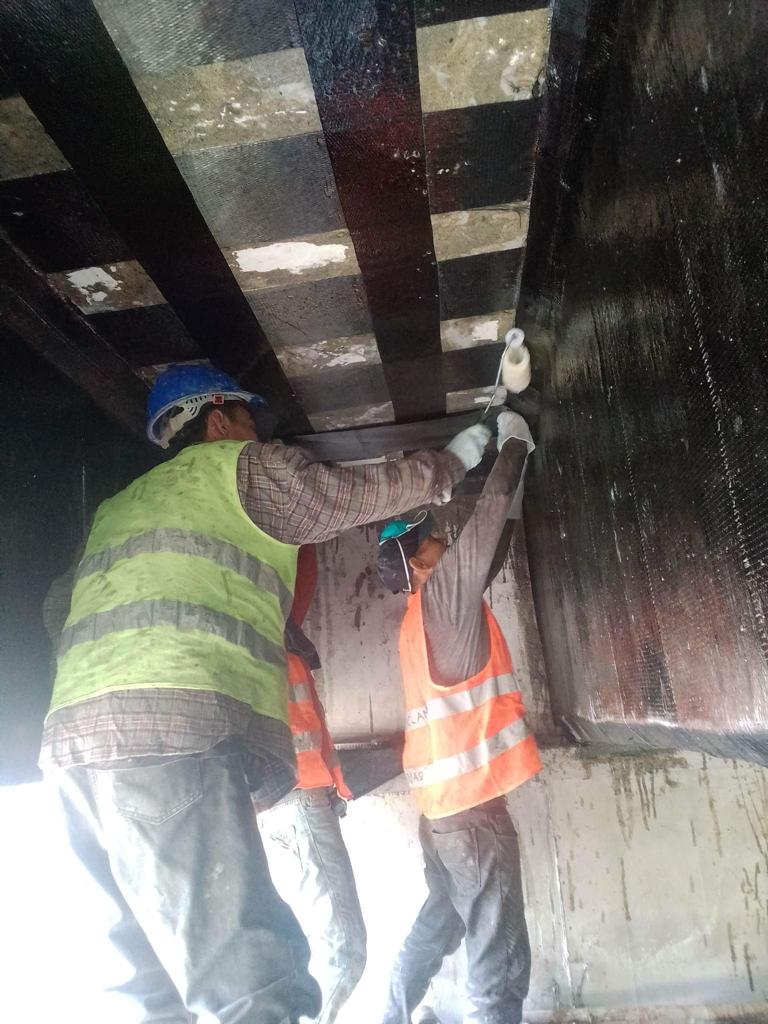
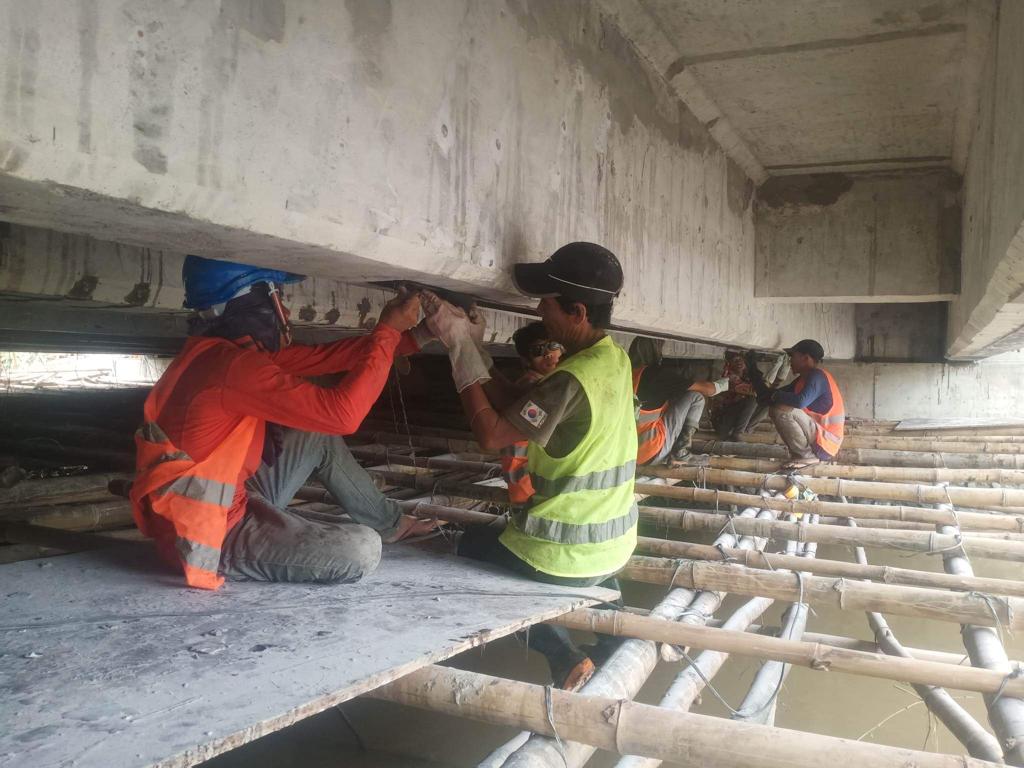
Basic construction steps:
(1) Base treatment:
① The deteriorating parts of the concrete surface, such as spalling, hollowing, honeycomb, corrosion, etc., should be chiseled off, and epoxy mortar should be used to repair the large area of inferior layers after chiseling off.
② Concrete angle grinder, sandpaper and other equipment to remove impurities such as laitance and oil stains on the concrete surface. The concrete on the base surface of the component should be polished flat, especially the raised parts on the surface should be smoothed, and the corners pasted should be chamfered and polished Into an arc shape (R ≥ 20mm).
③The fan cleans the concrete surface and keeps it dry.
(2) Primer
①According to the mixing ratio of main agent:curing agent=3:1, configure primer. Put the main agent and the curing agent in the container successively, measure with a spring balance, and stir evenly with an electric stirrer. Determine the dosage according to the actual temperature on site and strictly control the use time. Generally, it will be used up within 20-50mim.
②Apply the primer evenly on the surface of the concrete, and wait for the glue to cure (the curing time depends on the temperature on site, subject to finger dryness) before proceeding to the next step of construction. The general curing time is 6-24h.
(3) Leveling
① The sunken part of the concrete surface should be filled with repairing agent, and the parts with height difference such as formwork joints should be filled with repairing agent to minimize the height difference.
② The corners should also be repaired with a repair agent to form a smooth arc with a radius of not less than 20mm. The next step can be carried out after the surface of the repair agent is dry to the touch.
(4) paste
① Cut the carbon fiber cloth according to the size required by the design.
② Mix and stir the paste material adhesive (the method of use is the same as that of primer), and then apply it evenly on the parts to be pasted, and apply more on the lap joints, concrete corners and other parts. The thickness of the brushing should be slightly thicker than that of the primer. It is strictly forbidden to miss the brush, and pay special attention to the edge of the carbon fiber.
③Paste the carbon fiber cloth. After confirming that the pasted part is correct, use a special tool to repeatedly roll along the fiber direction to remove air bubbles, and make the adhesive fully soak the carbon fiber cloth; and use a scraper to scrape the surface of the carbon fiber cloth. uniform. The above steps should be repeated for multi-layer pasting, and the next layer of pasting can only be carried out after the surface of the carbon fiber cloth is dry to the touch.
④Apply adhesive glue evenly on the surface of the last layer of carbon fiber cloth. Use a tool to repeatedly roll along the fiber direction, and use a scraper to scrape the adhesive on the surface of the carbon fiber cloth to make it even.
⑤ The overlapping length of the carbon fiber cloth along the fiber direction shall not be less than 200mm.
(5) Protection
The surface of the reinforced carbon fiber cloth is protected by plastering or spraying fireproof paint.
(6) Quality requirements
①After each process is finished, it should be inspected according to the process requirements, and relevant acceptance records should be made. If there is any quality problem, it should be reworked immediately.
② On-site acceptance after construction is mainly to evaluate the bonding quality between carbon fiber cloth and concrete. Use small hammers and other tools to gently tap the surface of carbon fiber cloth to judge the bonding effect by echo. In case of empty drums and other irregularities in pasting, it should be remedied by injecting glue through the needle tube. If the bonding area is less than 90%, it is judged that the bonding is invalid and needs to be re-constructed.
③Strictly control the temperature and humidity of the construction site. The construction temperature is within the range of 5-35°C, and the relative humidity is not more than 70%.
